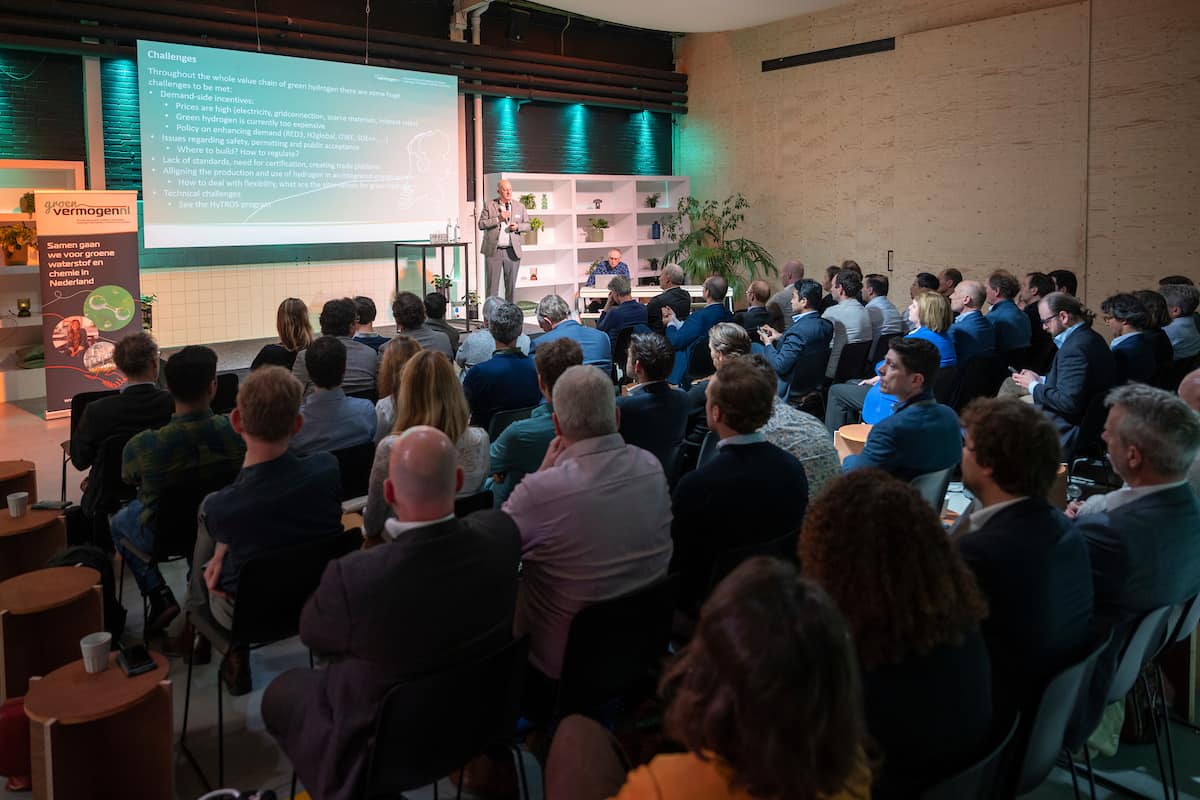Festive launch of GroenvermogenNL’s first R&D project HyTROS
€ 18 million for research on hydrogen infrastructure, offshore pipelines and hydrogen storage
GroenvermogenNL’s first R&D project HyTROS celebrated in the afternoon of April 11 in Amersfoort its formal start per early March. This project, an initiative involving 32 parties from research and industry, is contributing to the aim to accelerate the scaling up of green hydrogen in the Netherlands.
€ 18 million for research on hydrogen infrastructure, offshore pipelines and hydrogen storage
The HyTROS (Hydrogen Transport, Offshore, and Storage) project’s main objectives are to contribute to enabling a safe and reliable hydrogen infrastructure, to assess the potential for reuse of offshore pipelines and to derisk large scale hydrogen storage options. The research activities of HyTROS run from 2024 until the beginning of 2030 and are subdivided over three technical tasks (infrastructure development, offshore pipelines, and large-scale hydrogen storage) and two enabling tasks (safety, standardization and regulation, and upscaling & system integration). The size of the project is €18 million, which consists of a subsidy of €14 million and a contribution (cash and in-kind) of €4 million from industry.

Accelerating and facilitating the development of the hydrogen market
The event started with a presentation from GroenvermogenNL’s senior program manager Ed Buddenbaum followed by presentations from HyTROS project leader René Peters (TNO) and HyTROS technical manager prof. David Smeulders (TU Eindhoven). In the presentation of Ed the ambition for the Netherlands was addressed to have 4 GW of electrolysis capacity by 2030 for green hydrogen production and GroenvermogenNL’s goal to accelerate and facilitate the development of the hydrogen market.
A new energy system operating safely and cost-effectively with societal support
René Peters then linked the overall HyTROS research scope to the main topics that need to be investigated such as the extent to what current onshore and offshore natural gas systems can be repurposed for hydrogen, the identification of the need for new assets, and the determination of what needs to be regulated to ensure that a new energy system operates safely and cost-effectively with societal support.
David Smeulders introduced the main HyTROS research activities that contribute to these main topics and to explain how these activities have been organized via five (technical and enabling) tasks and what kind of interrelations are applicable between them. For each of the tasks the respective lead or co-lead then discussed the more detailed research plans and the specific involvement in these plans of the research organizations, university groups and industrial organizations.
The plenary kick-off program concluded with presentations of three of the industrial participants (Gasunie, HyET Electrolysis and Shell) highlighting the relevance of the HyTROS project for their ambitions and discussing the specific outcomes one is looking for and contributing to.
Over 60 attendees
The kick-off also offered ample room for the 60 attendees for offline discussions on HyTROS, for other exchanges and networking via a walk-in lunch, an intermediate break with a few posters and via the drinks and bites that concluded the kick-off. Overall, it was found that the event contributed to the further bonding within the project consortium, and it was also found that everyone was extremely looking forward to the collaborative research effort of HyTROS. On the latter the glass was raised during the drinks to celebrate that HyTROS is now on its way.





